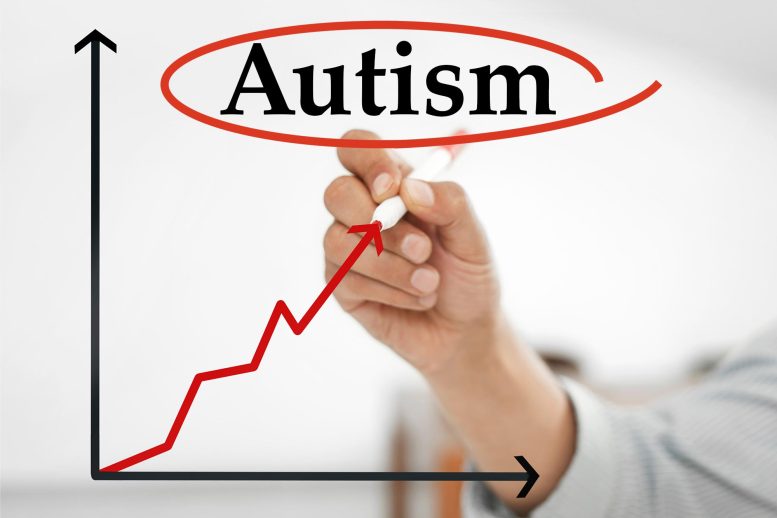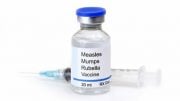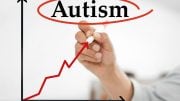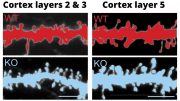
The prevalence of Autism Spectrum Disorder (ASD) among children in the United States is rising, with 1 in 36 8-year-olds (2.8%) identified with ASD according to a 2023 CDC report, compared to a previous 2021 estimate of 1 in 44 (2.3%). The report also revealed demographic changes, such as higher ASD rates among Black, Hispanic, and Asian or Pacific Islander children compared to white children, a decrease in the age of first diagnosis (especially in California), and a narrowing gender gap with more girls being identified with ASD than in previous years.
Research conducted at UC San Diego sheds light on the shifting demographics of autism and emphasizes the significance of early detection.
A recent study by the Centers for Disease Control and Prevention (CDC) reveals shifting trends in the occurrence and demographics of autism spectrum disorder (ASD) among American children.
According to the most recent data, 1 out of every 36 eight-year-old children, or 2.8%, have been identified with ASD. This proportion exceeds the previous estimate released in December 2021, which put the prevalence at 1 in 44 children, or 2.3%. This number is also significantly larger than the 0.7% prevalence (1 in 150 children) reported in the CDC’s inaugural autism prevalence study in 2007.
Prevalence estimates also differed across the 11 data collection sites, ranging from 1 in 43 children (2.3%) in Maryland, to 1 in 22 (4.5%) in California. A second report examined 4-year-old children in the same 11 communities and found similarly high rates of autism (2.2%) in the network overall, and 4.6% in California in particular.
The findings were recently published in the CDC’s Morbidity and Mortality Weekly Report (MMWR) Surveillance Summaries. All data were collected in 2020 by the Autism and Developmental Disabilities Monitoring (ADDM) Network, a program funded by the CDC to better understand the number and characteristics of children with ASD in the United States.
The network surveys 8-year-old and 4-year-old children in 11 communities across Arizona, Arkansas, California, Georgia, Maryland, Minnesota, Missouri, New Jersey, Tennessee, Utah, and Wisconsin. The California ADDM site is based at UC San Diego and reports on ASD within San Diego County.
Early Identification in California
In addition to the overall prevalence of ASD, the ADDM Network also tracks the age of first autism diagnosis. The median age of first autism diagnosis for 8-year-olds across the entire network was 49 months, or just over 4 years. However, in California, the age of first diagnosis was much lower at 36 months, or 3 years.
“California is unique because of the intense focus on early detection and extensive early services,” said study co-author Karen Pierce, Ph.D., professor at UC San Diego School of Medicine, co-director of the UC San Diego Autism Center of Excellence and principal investigator of the ADDM California site. “Some children in San Diego are diagnosed with autism by their second birthday and connected to services quickly thereafter. This is great news because the sooner they can be connected to services and support, the more likely they are to thrive in school and in later life.”
Racial and Ethnic Disparities
In contrast to all previous CDC reports, wherein white children were identified with ASD more often than non-white children, this is the first year that overall rates of ASD were consistently higher among Black (2.9%), Hispanic (3.2%), and Asian or Pacific Islander (3.3%) children compared to white (2.4%) children. This was also found in California where there were no differences found between racial and ethnic groups in California 8- and 4-year-olds.
“This first-of-a-kind finding is exciting because it suggests a movement towards equity in services for all children on the spectrum,” said Pierce.
Narrowing the Gender Gap
Historically, boys have been diagnosed with autism 4 to 5 times more often than girls. The latest report finds this gap is narrowing, as more girls have been identified with ASD than in years past, and the ratio between boys and girls has decreased in the ADDM Network overall. Specifically, boys are now identified 3.8 and 3.1 times more often for the 8- and 4-year-old cohorts, respectively. This is also the first ADDM Network report in which the prevalence of ASD among girls has exceeded 1%. This trend of increasing identification of females with ASD was also found in California.
While ADDM is not a representative sample of the entire United States, the report provides significant insight into rates of diagnosis across the country and highlights the importance of community access to early identification services. For those seeking more information on ASD diagnoses, the CDC’s “Learn the Signs. Act Early” program provides free resources in English, Spanish, and other languages to monitor children’s development starting at 2 months of age. Their Milestone Tracker Mobile app can also help parents and caregivers track their child’s development and share the information with their healthcare providers.
References: “Prevalence and Characteristics of Autism Spectrum Disorder Among Children Aged 8 Years — Autism and Developmental Disabilities Monitoring Network, 11 Sites, United States, 2020” by Matthew J. Maenner, Ph.D., Zachary Warren, Ph.D., Ashley Robinson Williams, Ph.D., Esther Amoakohene, MPH, Amanda V. Bakian, Ph.D., Deborah A. Bilder, MD, Maureen S. Durkin, DrPH, Ph.D., Robert T. Fitzgerald, Ph.D., Sarah M. Furnier, MS, Michelle M. Hughes, Ph.D., Christine M. Ladd-Acosta, Ph.D., Dedria McArthur, MPH, Elise T. Pas, Ph.D., Angelica Salinas, MS, Alison Vehorn, MS, Susan Williams, Amy Esler, Ph.D., Andrea Grzybowski, MS, Jennifer Hall-Lande, Ph.D., Ruby H.N. Nguyen, Ph.D., Karen Pierce, Ph.D., Walter Zahorodny, Ph.D., Allison Hudson, Libby Hallas, MS, Kristen Clancy Mancilla, Mary Patrick, MPH, Josephine Shenouda, DrPH, Kate Sidwell, Monica DiRienzo, MA, Johanna Gutierrez, Margaret H. Spivey, Maya Lopez, MD, Sydney Pettygrove, Ph.D., Yvette D. Schwenk, MS, Anita Washington, MPH and Kelly A. Shaw, PhD, 24 March 2023, Morbidity and Mortality Weekly Report (MMWR).
DOI: 10.15585/mmwr.ss7202a1
“Early Identification of Autism Spectrum Disorder Among Children Aged 4 Years — Autism and Developmental Disabilities Monitoring Network, 11 Sites, United States, 2020” by Kelly A. Shaw, Ph.D., Deborah A. Bilder, MD, Dedria McArthur, MPH, Ashley Robinson Williams, MPH, Esther Amoakohene, MPH, Amanda V. Bakian, Ph.D., Maureen S. Durkin, DrPH, Ph.D., Robert T. Fitzgerald, Ph.D., Sarah M. Furnier, MS, Michelle M. Hughes, Ph.D., Elise T. Pas, Ph.D., Angelica Salinas, MS, Zachary Warren, Ph.D., Susan Williams1, Amy Esler, Ph.D., Andrea Grzybowski, MS, Christine M. Ladd-Acosta, Ph.D., Mary Patrick, MPH, Walter Zahorodny, Ph.D., Katie K. Green, MPH, Jennifer Hall-Lande, Ph.D., Maya Lopez, MD, Kristen Clancy Mancilla, Ruby H.N. Nguyen, Ph.D., Karen Pierce, Ph.D., Yvette D. Schwenk, MS, Josephine Shenouda, MS, Kate Sidwell, Alison Vehorn, MS, Monica DiRienzo, MA, Johanna Gutierrez, Libby Hallas, MS, Allison Hudson, Margaret H. Spivey, Sydney Pettygrove, Ph.D., Anita Washington, MPH and Matthew J. Maenner, Ph.D., 24 March 2023, Morbidity and Mortality Weekly Report (MMWR).
DOI: 10.15585/mmwr.ss7201a1









There is a cause that is linked with a whole host of other health issues, but with plugged ears and singing,”La-la-la-la-la-la…”, western scientists and media will not hear of it because the answer brings down some very rich companies and people.
Are we really surprised?
Inject vast concoctions of “vaccines” into the human body from the point of birth and then wonder why things like this happen?
All about that $$$$$$!!
Microplastics, pesticides, heavy metals and rampant hormones in the drinking water, food and air. There’s your cause for all that ails you and your children.